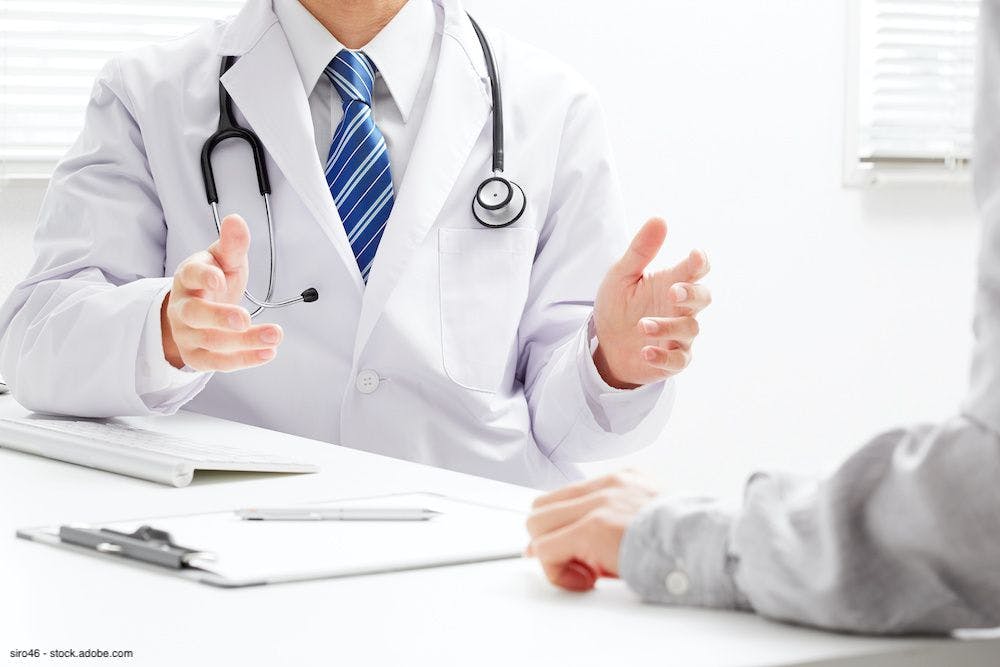Publication
Article
Urology Times Journal
Rechargeable neuromodulation system safe and efficacious through 1 year
Author(s):
The reduction in urinary urgency incontinence episodes observed was “quite significant,” an investigator said.
Results from 1 year of follow-up of patients enrolled in a pivotal clinical trial show that sacral neuromodulation (SNM) with a miniaturized, implanted rechargeable device (Axonics System) provides highly safe and durably effective treatment for urinary urgency incontinence (UUI), said Howard B. Goldman, MD, at the 2020 American Urological Association Virtual Experience.
Goldman, a professor of urology at Cleveland Clinic Lerner College of Medicine in Cleveland, Ohio, presented the research on behalf of the study investigators. He reported that reduction in UUI episodes observed at the study’s primary end point at 6 months were sustained through 1 year, and the safety profile of SNM with the rechargeable device was consistent with SNM experience reported in the literature.
“Patients also benefited with clinically significant improvements in quality of life, had a high level of satisfaction, and found the charging task user friendly,” Goldman said.
The rechargeable SNM system received FDA approval for treating UUI, urinary urge frequency, and urinary retention in November 2019. The pivotal trial supporting the decision had a single-arm design and enrolled 129 patients at 19 centers in the United States and western Europe. Subjects were eligible for inclusion if they had 4 or more UUI episodes in a 3-day diary, including 1 or more episode per day. Individuals with more than a minimal level of stress incontinence, anatomic urinary tract obstruction, or an underlying neurological condition were excluded.
The trial’s participants ranged in age from 21 to 86 years (mean 59) and were almost entirely women (98%). Mean UUI episodes per day at baseline was 5.6.
The primary end point for the study assessed the rate of therapy responders at 6 months. Ninety percent of women, defined as participants achieving a 50% or greater reduction in UUI episodes per 3 days, achieved the end point. The therapy responder rate was 89% at 1 year.
“The reduction in UUI episodes was quite significant in the study cohort,” Goldman said.
“At 6 months it had decreased to 1.3 episodes per day and it was 1.4 at 1 year. Furthermore, more than three-fourths of patients had at least a 75% reduction in daily UUI episodes at 1 year, and the remaining participants achieved at least a 50% reduction.”
Quality of life was evaluated using a validated questionnaire (International Consultation on Incontinence Questionnaire Overactive Bladder Quality of Life Module). At 1 year, changes from baseline in the total score and in scores for individual domains (concern, coping, sleep, and social) ranged from 22 to 34.
Quality of life improvements statistically significant
“All of the improvements were statistically significant and far exceeded the minimum 10-point change that is considered clinically significant,” Goldman said.
At 1 year, 93% of patients said they were satisfied with the therapy, and 92% said they would undergo the therapy again with the same expected results. Questions pertaining to the charging of the device showed that it was considered easy by 89% of participants, and 96% rated the frequency and duration of charging as acceptable. Ninety-five percent of participants reported recharging the device no more than once a week, and 86% reported that the total charge time was 60 minutes or less.
There were few adverse events (AEs) in the series and no serious device-related AEs. The most common AE was uncomfortable change in sensation or magnitude of stimulation (5%).
No patient underwent surgical intervention for pain, but 3 patients underwent a revision and the device was explanted in 1 patient due to infection.
“Interestingly, 6 patients had magnetic resonance imaging during the year after implantation, which was full body in 4 participants, without any evidence of adverse events,” Goldman said.
The rechargeable SNM device is also approved for the treatment of fecal incontinence, and changes in fecal incontinence were evaluated prospectively in the pivotal trial. Data collected in the subgroup of patients who had fecal incontinence at baseline showed they experienced a statistically significant improvement at 6 months and even greater benefit at 1 year.
“Overall, 91% of patients who had bowel symptoms at study entry were satisfied with how that problem was helped as well,” Goldman said.
Disclosures: Dr Goldman is a study investigator and a consultant to Axonics Modulation Technologies. Axonics Modulation Technologies provided funding for the study.
Reference
Long Term Clinical Results on Treatment of Urinary Urgency Incontinence with the Axonics Rechargeable Sacral Neuromodulation System. Presented at: 2020 AUA Virtual Experience. Abstract PD27-12.

Newsletter
Stay current with the latest urology news and practice-changing insights — sign up now for the essential updates every urologist needs.




























